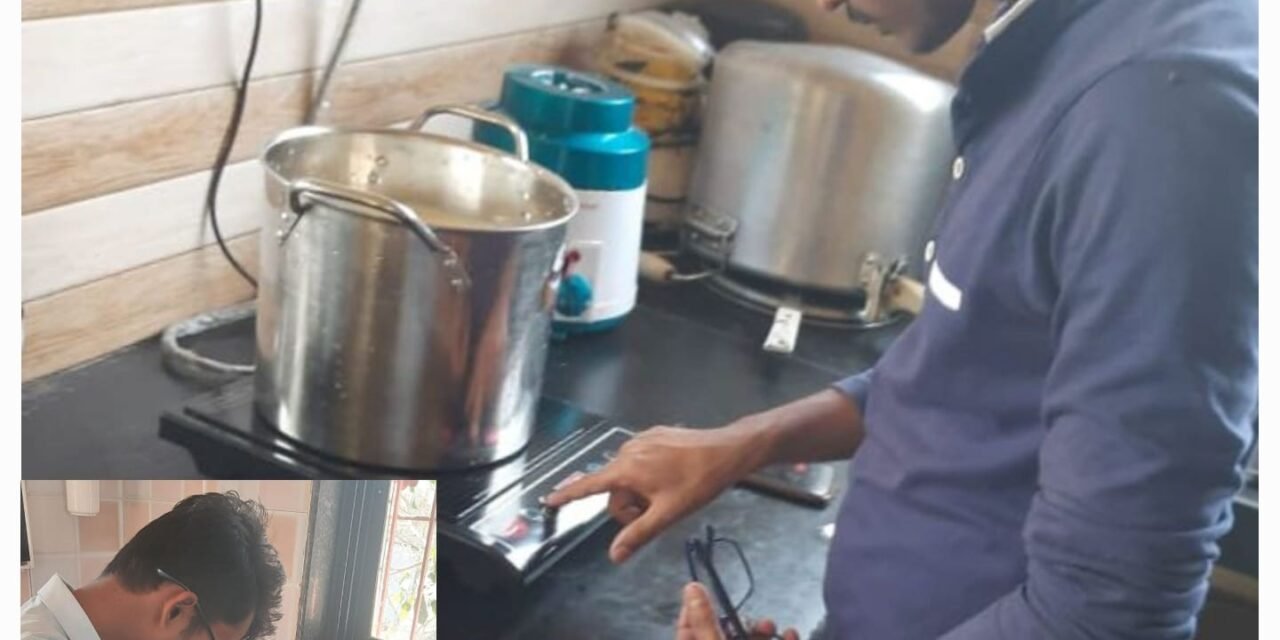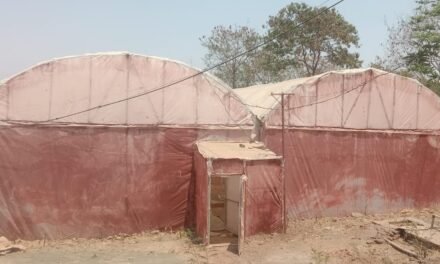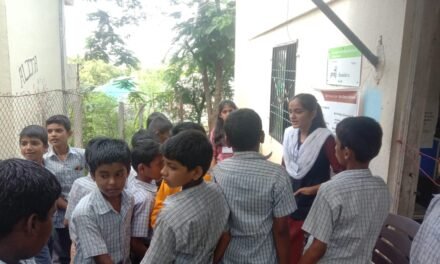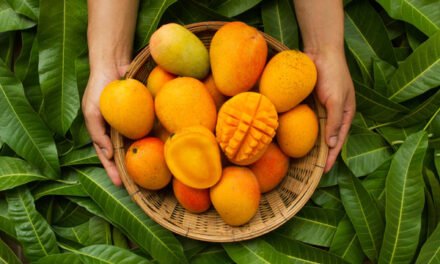In Vigyan Ashram all electricity demand is fulfilled by the sun i. e. by solar Photovoltaic (PV) panels. Solar PV panel converts the solar radiation of the sun into electrical energy. This energy is in DC current and it is converted to AC current with the help of DC to AC converter (Inverter). This power generation process is done without any CO₂ emission.
Date:16/02/2023
We tried to use that free energy for cooking also, I did a survey of a kitchen.
Resources used for cooking in the kitchen of Vigyan Ashram
- LPG Gas: LPG gas is used for breakfast making, boiling 6 -7-liter milk per day, and making roti for 50 -60 persons two times a day.
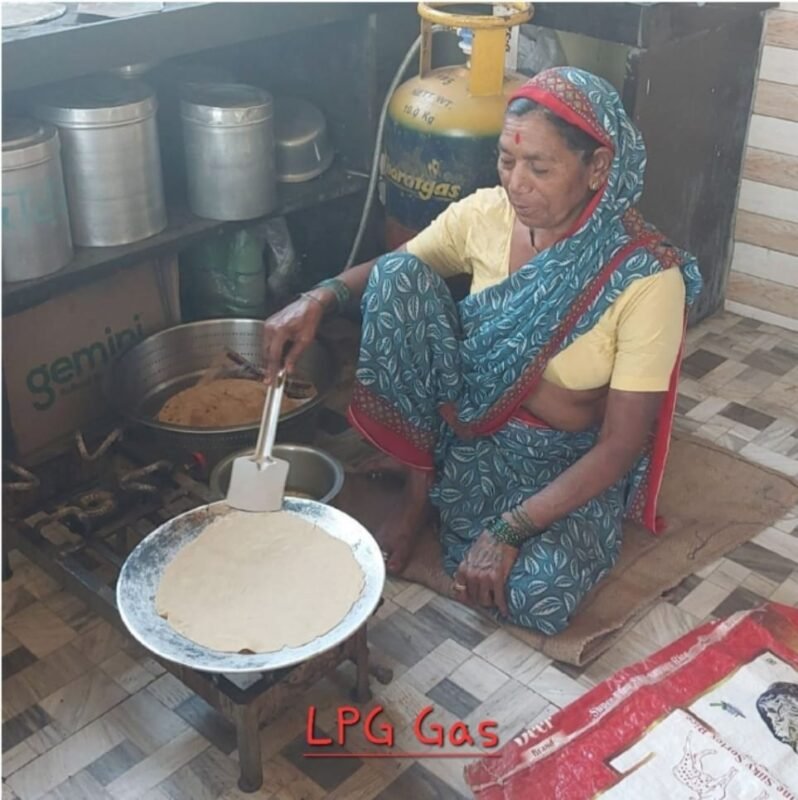
2. Biogas: Biogas is used for making rice for 50 -60 persons two times a day, for cooking vegetables, and for boiling dal.
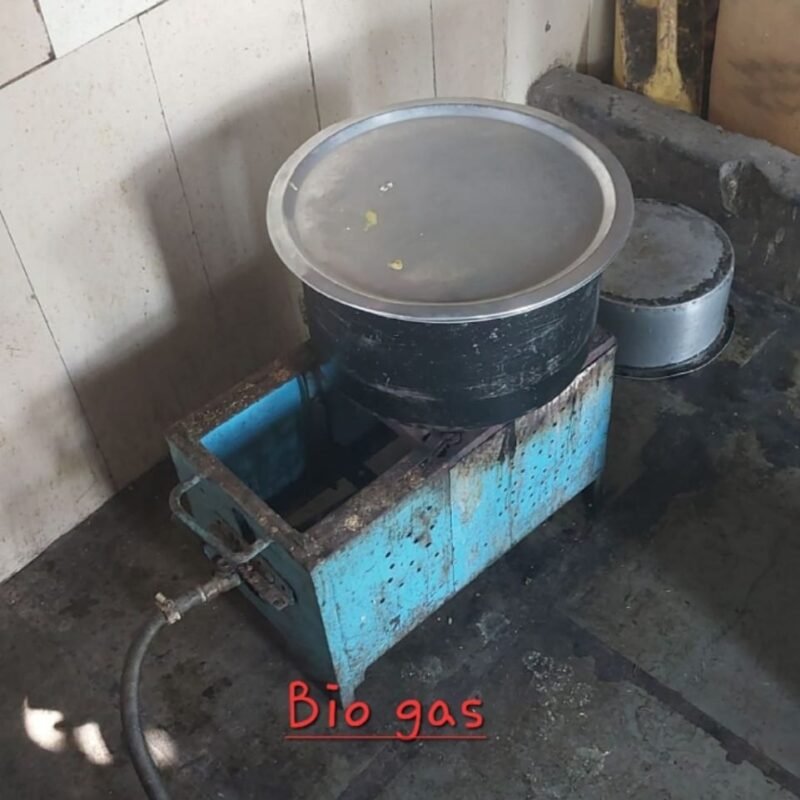
3. Wood: Wood is for giving Tadaka to dal and for vegetables.

4. Parabolic dish collector used for cooking dal which is used at dinner.
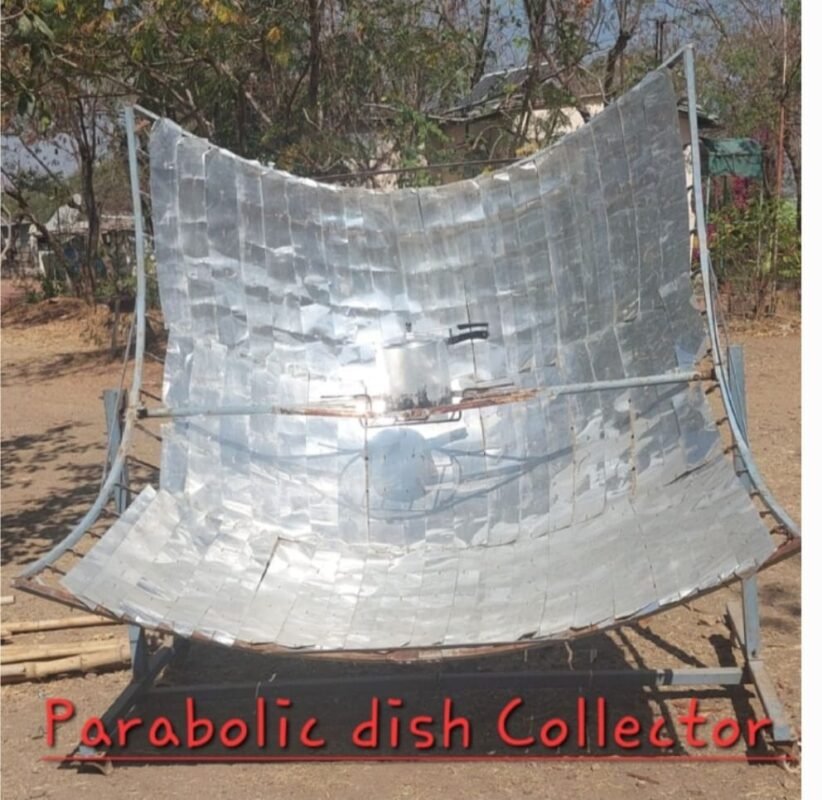
In the kitchen, mostly LPG gas and Biogas are used and for heating milk, LPG gas is used. For comparison, I did some experiments, including milk heating on LPG gas and milk heating on an Induction stove.
Date:21/02/2023
LPG gas required to boil 1 liter of Milk
Readings:
1. Quantity of Milk: 4 liter
2. Mass of utensil used (Duralumin):680gm
3. Capacity of utensil used: 5 liters.
4. Specific Heat of Duralumin(c): 0.9 J/g oC (constant).
5. Initial temperature of milk(T1): 25°C
6. Final temperature of Milk: 92°C
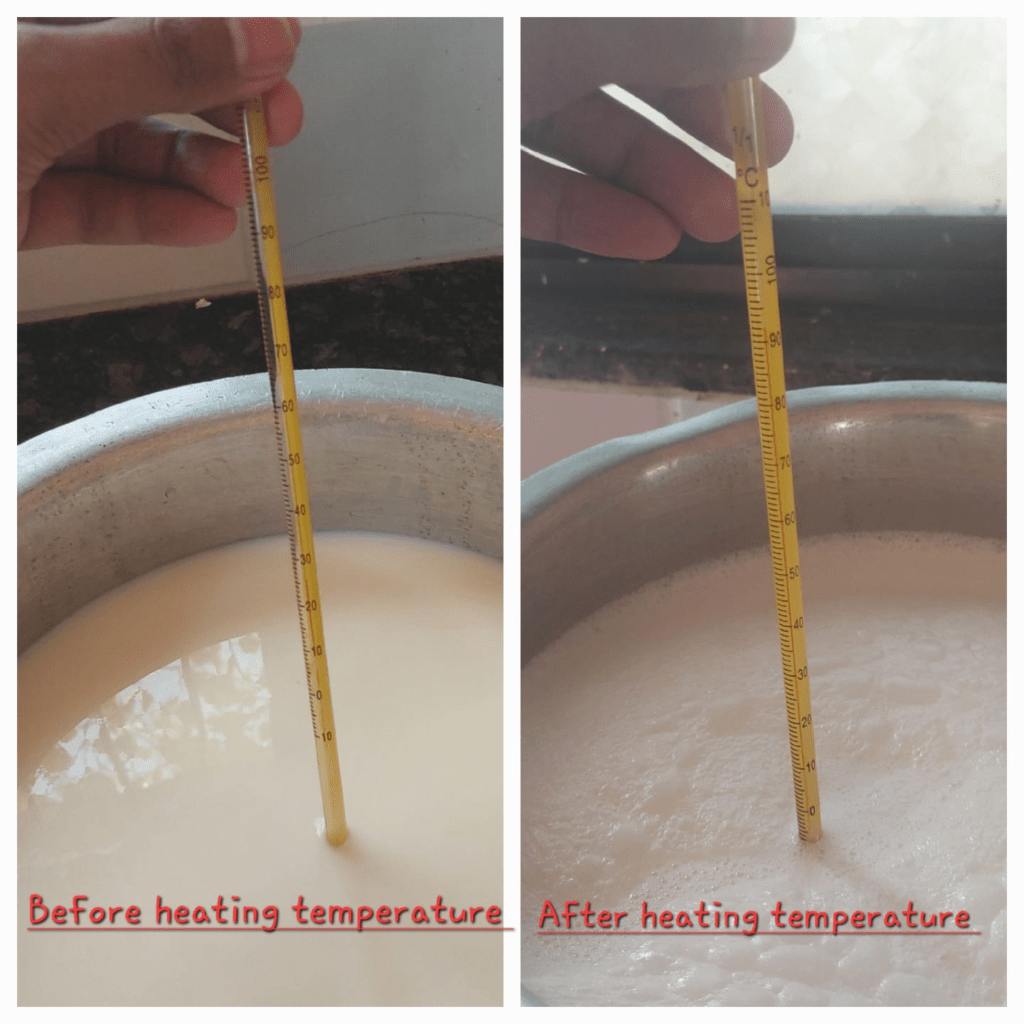
7. Weight of LPG gas cylinder before milk heating (Bwt): 23100 gm.
8. Weight of LPG gas cylinder after milk heating (Awt): 23060 gm.
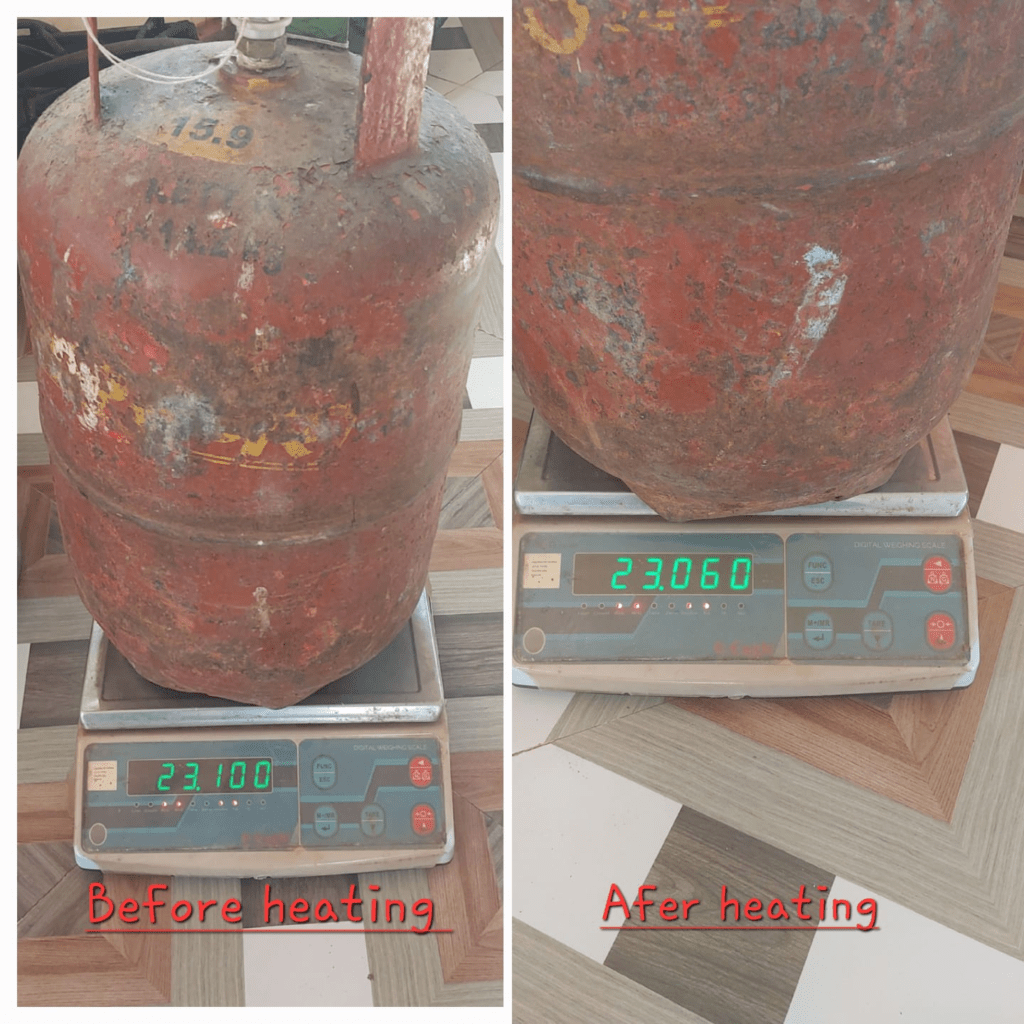
9. time required to boil milk at medium flame: 18 min 49 sec.
Calculations:
Gas required to heat the utensil:
Q =m*c*(T2-T1)
Where Q =Heat energy required
m =Mass of utensil
c = Specific heat capacity of duralumin
T2-T1=Change in temperature.
Here utensil temperature and milk temperature are the same i.e., T1.
And final temperature of the utensil is greater than the milk’s final temperature i.e., T2 =100 °C.
Q = 680*0.9*(100-25)
Q = 45900 J =45.9 KJ
The calorific value of LPG =50000 KJ/KG =50KJ/gm.
Therefore approximately 1 gm of LPG gas is required to heat the utensil, so we neglect it.
LPG gas required to boil 1 liter of milk:
LPG gas required to boil 4 liters of milk = Awt – Bwt
=23100-23060
LPG gas required to boil 4 liters of milk = 40 gm
LPG gas required to boil 1 liter of milk = 40/4 =10 gm
LPG gas price in Pune is Rs 1050 /- for 14.2 Kg gas i.e. Rs 73 /- for 1 Kg
In Vigyan Ashram daily 13-liter milk is heated by LPG gas =13 liter/day * 10 gm/liter
=130 gm /day
=3900 gm /month
The monthly cost of Vigyan Ashram for milk heating by LPG gas is = 3.9 Kg/month * 73 Rs/Kg
= 284.7 Rs /month
Result :
10 grams of LPG gas is required to boil the 1 liter of milk
Date: 2/3/2023
Electricity required to boil 1 liter of Milk
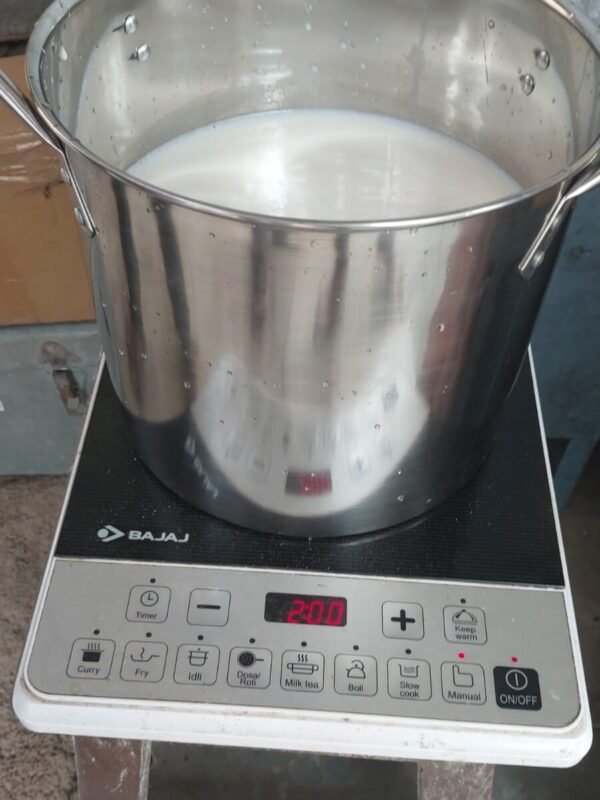
Readings:
1. Quantity of Milk: 5 liter
2. Mass of utensil used (Stainless steel):639gm
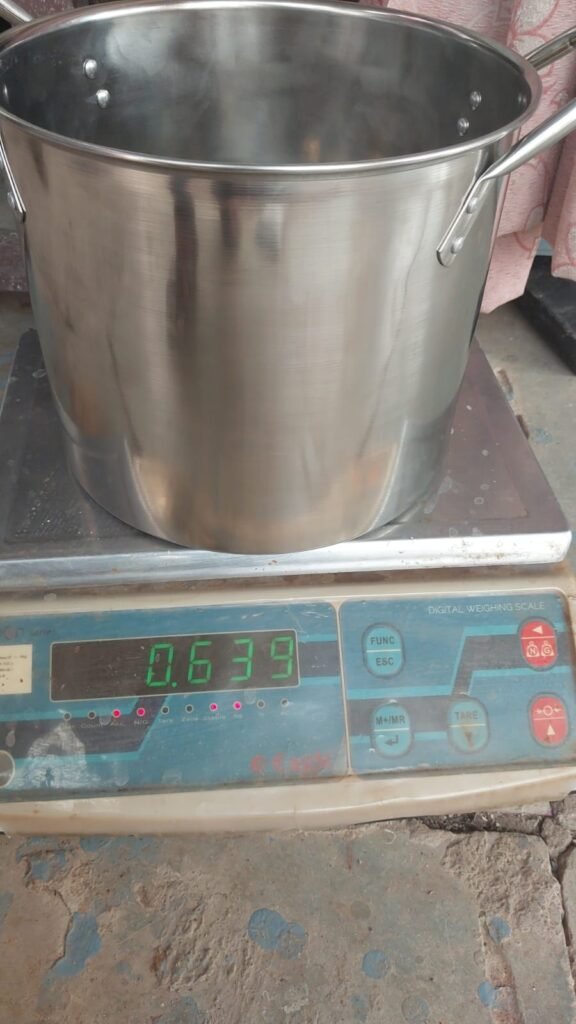
3. Capacity of utensil used: 9 liters.
4. Specific Heat of Stainless steel(c): 0.5 J/g °C (constant).
5. Initial temperature of milk(T1): 26°C
6. Final temperature of Milk ( T3): 92°C
7. Weight of utensil before milk heating with milk in it (Bwt): 4825gm
8. Weight of utensil after milk heating with milk in it (Awt): 4754gm.
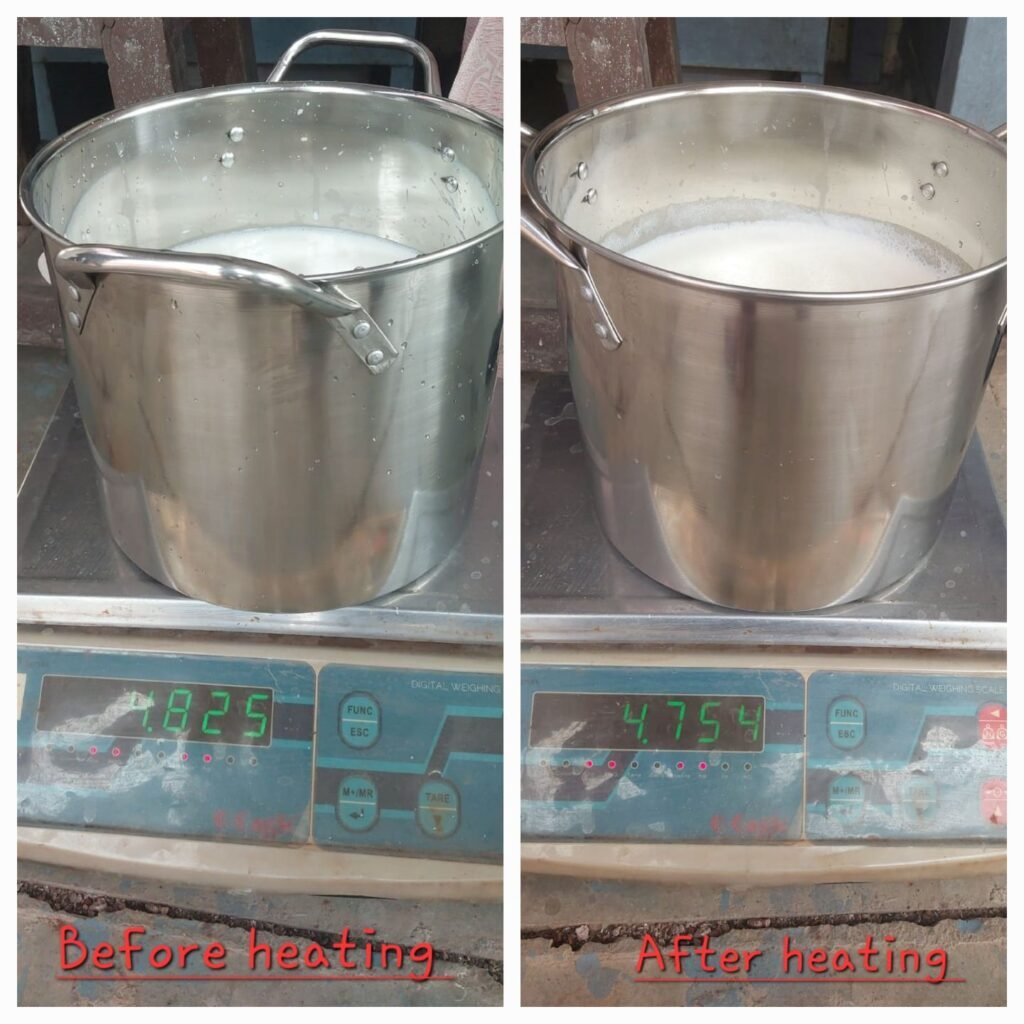
9. Time required to boil milk at medium flame: 19 min 13 sec.
10. Meter reading before heating (mrB): 3365.7 units
11. Meter reading after heating (mrA): 3366.1 units
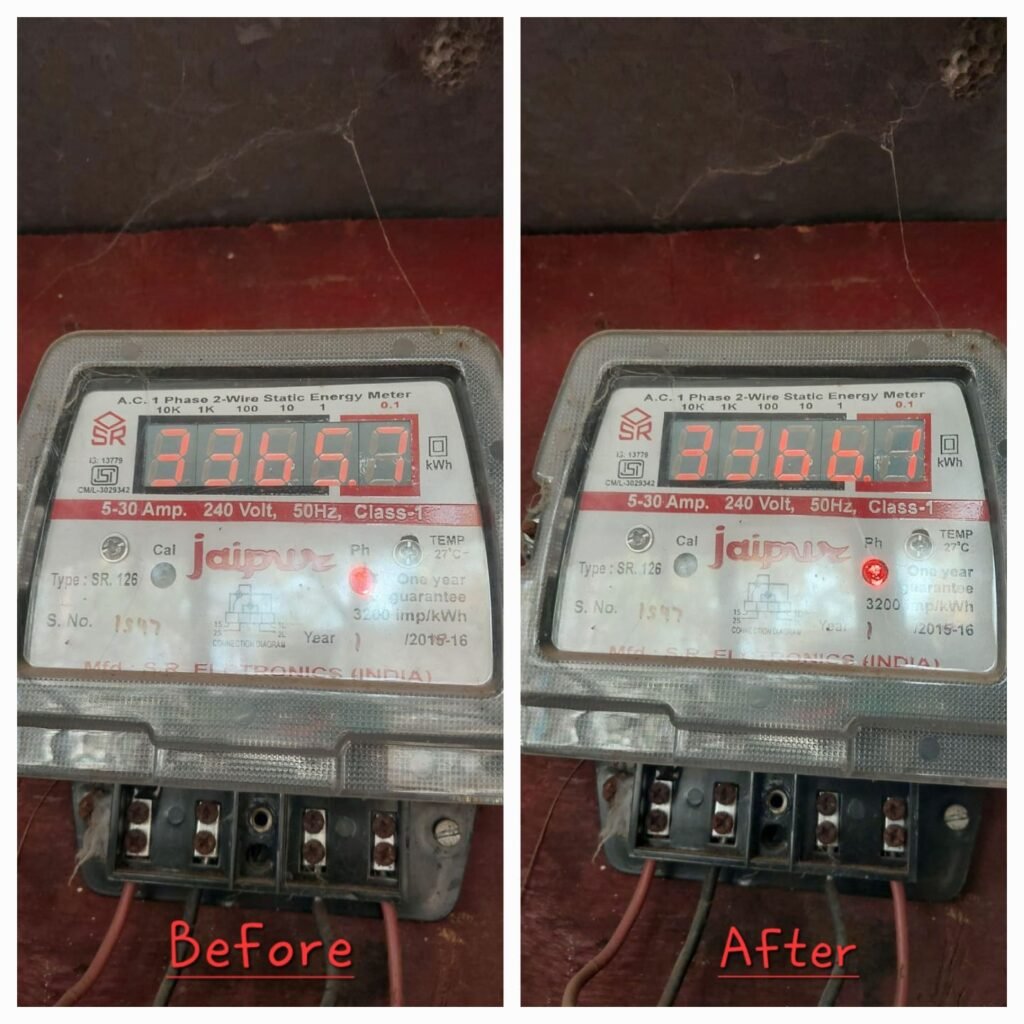
Calculations:
Heat required to heat utensil(Q1):
Q1 =m*c*(T2-T1)
Where, Q1 =Heat energy required
m = Mass of utensil
c = Specific heat capacity of Stainless steel (0.5 J/g °C)
T2-T1=Change in temperature.
Here utensil temperature and milk temperature are the same i.e., T1.
And final temperature of the utensil is greater than the milk’s final temperature i.e., T2 =100 °C.
Q1 = 639*0.5*(100-26)
Q1 = 23643 J =23.6 KJ
Heat required to vaporize water(Q2):
Q2 = mL
where Q2 = Heat required to vaporize water
m = Mass of water
L = Latent heat of water = 2260 KJ/KG
m= Bwt -Awt = 4825 – 4754 =71 gm
Q2 = 0.071 * 2260
Q2 = 160.46 KJ
Heat Required to boil milk (Q3):
Q3 = m* c * (T3 -T1)
where, Q3 =Heat energy required
m =Mass of milk = 5.175 KG
c = Specific heat capacity of milk (3.89KJ/Kg °C)
T3-T1=Change in temperature of the milk
Q3 = 5.175 * 389 * (92- 26)
Q3 = 1328.6 KJ
Total heat required:
Q = Q1+ Q2 +Q3
=23.64 + 160.46 + 1328.6
Q = 1512.7 KJ of energy is required for 5-liter milk.
Therefore, 1512.7/5 = 302.5 KJ energy is required for 1 liter of milk
The electrical energy required :
Units required for milk heating = mrA – mrB
= 3366.1 – 3365.7
Units required for milk heating = 0.4 units
0.4 units of energy is required for heating on Induction stove
we convert this unit of electricity to KJ,
=0.4 * 3600
=1440 KJ
Here, the energy calculated by both the thermodynamic way(1512.7 KJ) and electrical Way ( 1440 KJ) are nearly the same, some error is there due to the limitations of meter reading, which means both calculations are correct.
Units Required for heating 1-liter milk = 0.4 /5
Units Required for heating 1-liter milk = 0.08
In Vigyan Ashram daily 13-liter milk is heated by LPG gas =13 liter/day * 0.08 units/liter
=1.04 units /day
=31.2 units /month
MSEB 1 unit price is Rs 8/- in Pune
The monthly cost of Vigyan Ashram for milk heating by induction stove is = 31.2 units/moths * 8 Rs/unit
= 249.6 Rs/month
Result :
0.08 units of electricity is required to boil the 1 liter of milk
Conclusion:
From all the above calculations and readings milk heating or boiling is more economical on an induction stove than LPG gas.
we can save 35 Rs per month out of 284 Rs by using an induction stove. which means induction cooking is 13 % less costly than LPG gas. In Vigyan Ashram all requirement of electricity is fulfilled by solar panels, so the electricity bill of Ashram is zero rupees per month. which means we can save all 284 Rs per month.
Date:3/3/2023
Induction stove survey:
I did the survey of various induction cooktops as per our requirements for the Vigyan Ashram kitchen. I selected Three companies for it and compared their cost, weight, dimensions, and rating of customers.
| Company | Prestige | Bajaj | Pigeon |
| Cost (Rs) | 3500/- | 3400/- | 1689/- |
| Weight (Kg) | 3.5 | 3.4 | 1.527 |
| Dimensions (Cm) | 45*34*11 | 36.5*29*41 | 38*32*10 |
| Customers Rating (in Stars) | 4 (8445 customers No.) | 4 (1009 customers No.) | 4 (55406 customers No.) |
I have shown the survey to Dixit sir and we selected the pigeon cooktop as best as per the survey and it is less expensive.

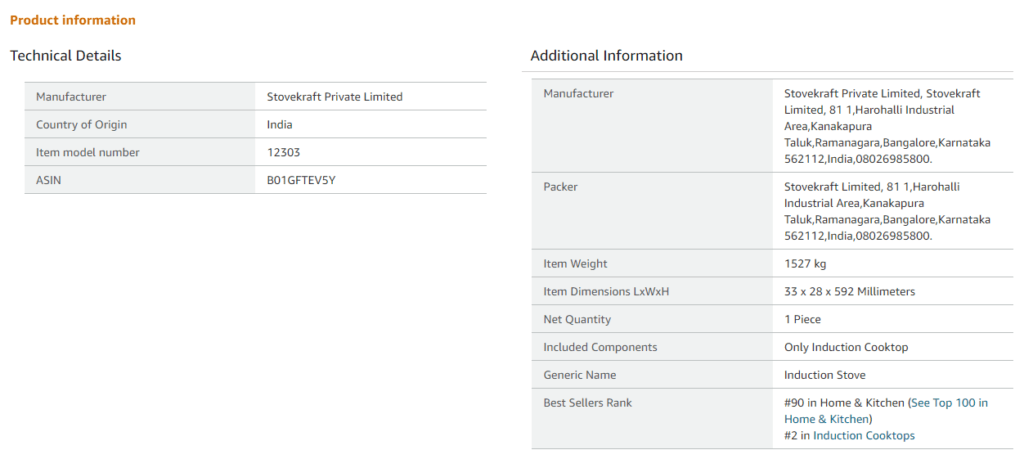
Date: 4/3/2023
Above selected induction Cooktop I ordered it at the DIY lab of Vigyan Ashram with the help of Mahesh sir. it was delivered to that place on 6 March 2023. and to Vigyan Ashram on 11 March.
Date: 11/03/2023
I unpacked that induction cooktop, me and Rahul took trials on it. We explained all use of the induction cooktop and its working to our kitchen’s Mavashi.
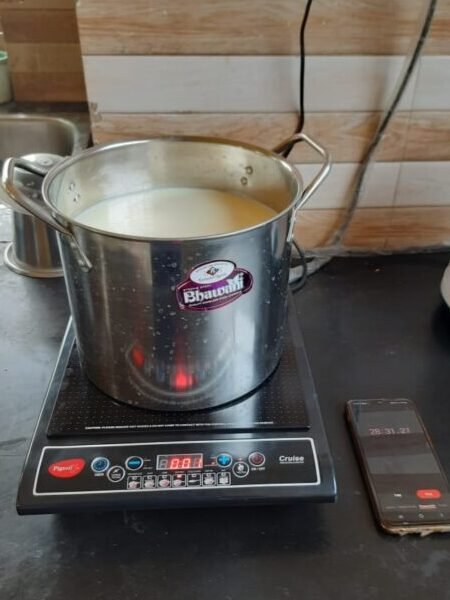
Date:20/05/2023
Prasad sir told me to prepare a para on the heating of milk by LPG gas and Induction heating on the basis of the content of your blog to post on the Facebook page of Vigyan Ashram.
I asked Dixit sir what should I include in that para then sir told me, you have compared LPG heating of milk and Induction heating of milk on the basis of cost. now you compare on the basis of CO2 emission of both heating sources.
1 Kg of LPG emits 3 kg of CO2 in the atmosphere after completely burning and 950 gm of CO2 is get emitted to generate 1 unit of electricity (Calculated from Google)
For LPG gas:
If 1Kg =1000gm LPG emits-3Kg=3000gm of CO2
then 10 gm LPG emits -30 gm CO2 and we include emission of CO2 while transporting it to home from LPG gas station.
60 gms of CO2 is emitted per km to transport 14.2 kg LPG gas i.e., one gas cylinder. The distance between the nearest gas agency i.e. Varad Bharat Gas Agency is 22 Km from Pabal.
If 14200 gm emit – 60 gm/Km CO2
then 10 gm emits -0.042gm/Km CO2
CO2 emitted to transport 10 gm of LPG from Varad Gas Agency to Pabal = 0.04 gm/Km *22 Km
=0.924 gm
= 1gm
Total CO2 emitted by 10 gm LPG gas =30 + 1= 31gm
For electricity:
If 1unit =1000 Wh electricity emits- 950gm of CO2
then 0.08 unit of electricity emits -76 gm CO2 ( out of 100 % 75 % of electricity is generated by Steam power plants and the
remaining 25 % is generated by renewable energy resources.)
– 76*0.75
0.08 units of electricity emit – 57 gm ( 17 % of grid losses are there in India.)
-57*1.17
-67 gm
Total CO2 emitted by 0.08 units of electricity =67 gm
Conclusion:
From the calculation, we can see that the carbon footprint of Induction cooking is more when MSEB electricity is used than that of LPG gas cooking. which means CO2 emission is more in Induction cooking as compared to LPG gas cooking. when we compared both cases with respect to cost then induction cooking is 13 % less costly than LPG gas.

